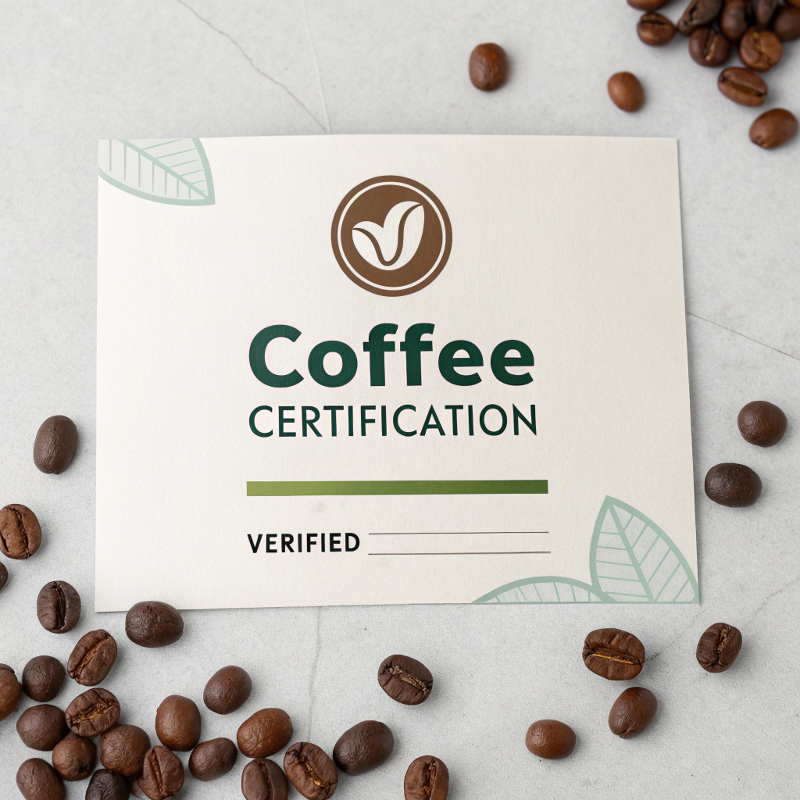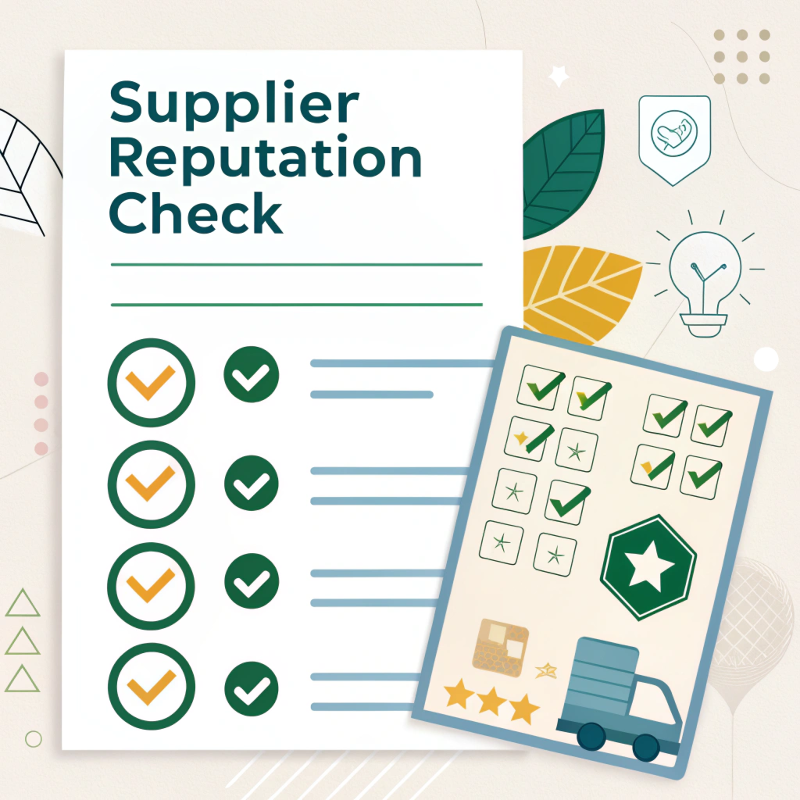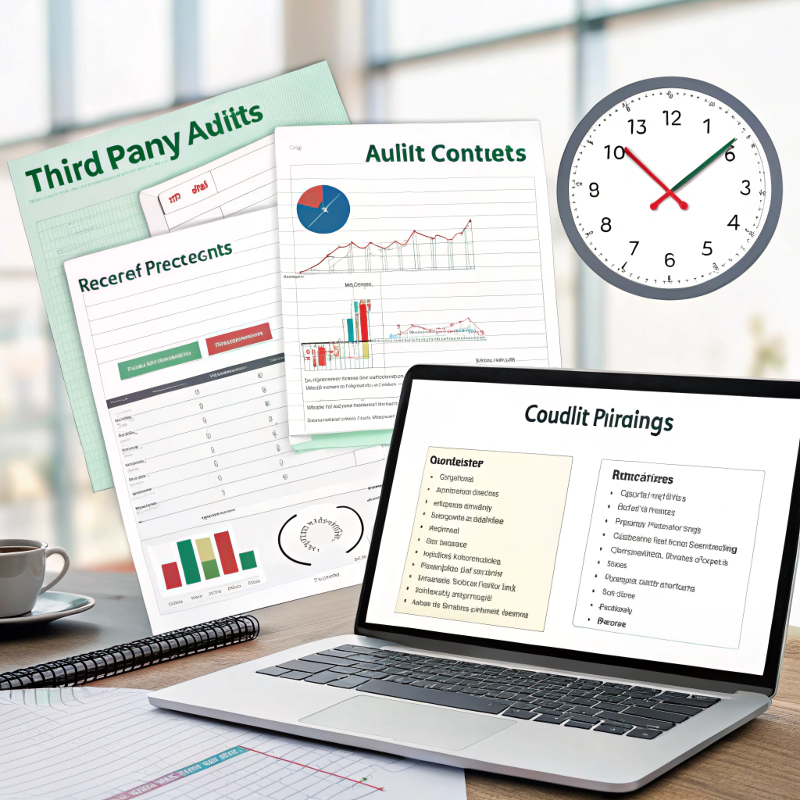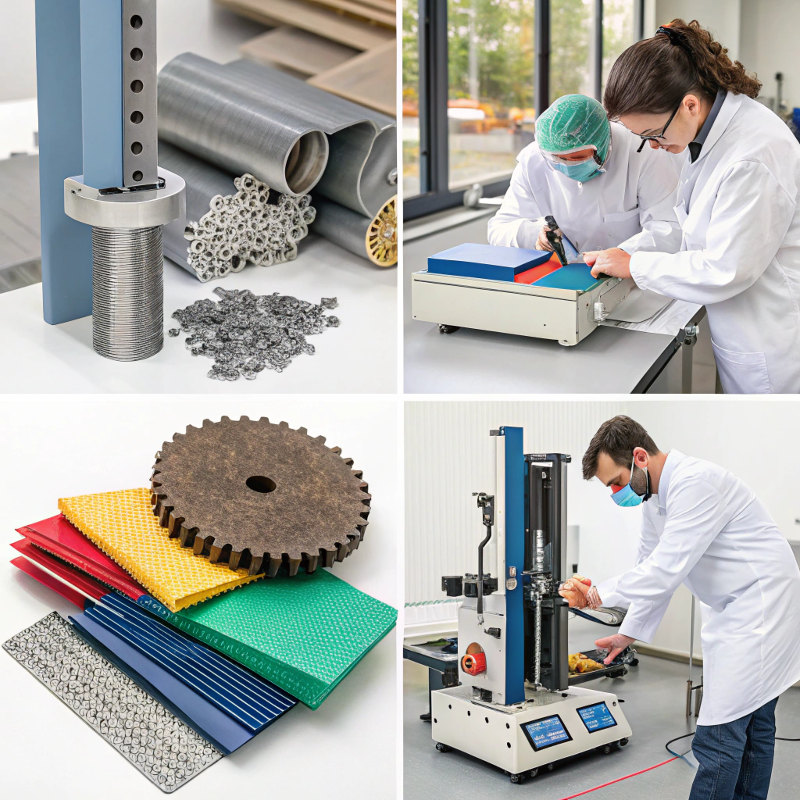Counterfeit certifications are rampant in China's manufacturing sector. Your business reputation and customer safety are at stake. Knowing how to verify authenticity is crucial for sustainable sourcing.
To verify certification authenticity, implement a multi-step process: examine original documentation, validate with certifying bodies, verify business credentials, assess supplier reputation, conduct third-party testing, and inspect material samples against claimed standards.

As someone who's been manufacturing coffee accessories in China for years, I've witnessed how certification fraud can devastate businesses. Let me share proven strategies to protect your coffee accessory business from certification fraud.
How can you review certification documentation rigorously?
Many buyers accept photocopies or scanned certificates at face value. This oversight can lead to compliance issues, product recalls, and severe reputational damage.
Always request original certificates with test reports directly from suppliers. Examine document quality for security features like watermarks, consistent fonts, and official seals. Check for proper signatures matching the certifying body's standard format.

Document Authentication Essentials
When examining certification documents from coffee accessory manufacturers, attention to detail is paramount. I've trained our quality control team to spot the subtle signs of fraudulent documentation that many buyers miss.
Physical Document Inspection
Authentic certifications typically feature several key security elements:
- Paper Quality: Premium, consistent weight throughout
- Printing Clarity: High-resolution logos and text without pixelation
- Security Features: Watermarks visible when held to light, embossed seals, or holographic elements
- Consistent Formatting: No font or spacing irregularities that suggest digital manipulation
Digital Certificate Verification
For electronic documents, additional verification steps include:
- Digital Signatures: Valid embedded electronic signatures that can be verified
- Metadata Integrity: Document properties showing original creation dates and sources
- QR Codes: Scannable codes linking directly to certification body databases
| Red Flags in Documentation | What This May Indicate |
|---|---|
| Inconsistent fonts or sizes | Cut-and-paste forgery |
| Blurry stamps or signatures | Photocopied documentation |
| Missing certificate numbers | Fabricated certification |
| Outdated certification logos | Expired or falsified documents |
| Unusual document formatting | Template downloaded from internet |
Our most successful distributor partners maintain comprehensive certification libraries and cross-reference new documents against previously verified standards. This systematic approach has repeatedly identified suppliers attempting to pass off falsified material safety certifications.
Why is cross-checking with certifying authorities essential?
Suppliers may present convincing forgeries that pass visual inspection. Without verification from issuing authorities, you risk importing products with toxic materials that violate regulations.
Contact certification bodies directly using certificate ID numbers to confirm validity. Utilize official accreditation databases like IAAR or ANSI to verify a manufacturer's certifications and their current standing with regulatory authorities.
Direct Verification Protocols
In my experience dealing with international coffee accessory distribution, verification with certifying authorities serves as the most reliable defense against sophisticated certification fraud. This process requires persistence but provides unmatched confidence in your supply chain integrity.
Reaching Out to Certification Bodies
When contacting certification authorities, follow these guidelines:
- Use Official Channels Only: Navigate directly to the certification body's website rather than following links provided by suppliers
- Provide Complete Information: Have the full certificate number, issuance date, and company details ready
- Request Scope Verification: Confirm that the specific materials and products you're purchasing are covered under the certification
Navigating International Certification Systems
| Certification Type | Verification Resource | Verification Method |
|---|---|---|
| FDA Compliance | FDA Industry Systems Portal | Search by FEI number or registration details |
| RoHS Certification | EU REACH & RoHS database | Certificate number validation |
| ISO Certifications | IAF CertSearch database | Lookup by organization and certificate number |
| NSF Certification | NSF Online Listings | Search by company name and product category |
| LFGB Certification | German authority database | Certificate code verification |
In one instance, our team discovered a potential supplier presenting an impressive-looking FDA certificate. When we contacted the FDA directly, we learned the certification number belonged to a completely different product category. This cross-verification saved us from a potentially costly compliance nightmare and reinforced our verification protocols across all supplier relationships.
How should you verify business credentials of manufacturers?
Ghost factories and shell companies often present borrowed credentials. Without proper business verification, you might negotiate with middlemen posing as manufacturers, compromising quality and margins.
Use Chinese government databases to validate business registration numbers, export permits, and quality management certifications. Verify production capacity matches claimed output by requesting facility documentation or conducting virtual tours.

Business Legitimacy Assessment
Having operated a manufacturing facility in China for years, I understand the complex business landscape that foreign buyers must navigate. Establishing the legitimacy of a coffee accessory manufacturer requires methodical investigation beyond simple certification checks.
Chinese Business Registry Verification
China's National Enterprise Credit Information Publicity System (NECIPS) provides accessible verification tools:
- Business License Validation: Check the 18-digit Unified Social Credit Code (统一社会信用代码) against official records
- Operational History: Confirm years in operation matches claimed experience
- Registered Capital: Assess financial stability based on registered investment
- Business Scope: Verify authorized manufacturing categories align with coffee accessories
Production Capability Confirmation
"Ghost factories" – operations that claim manufacturing capabilities they don't possess – represent a significant risk in the coffee accessory industry. Verify claimed production capacity through:
| Verification Method | What to Request | Red Flags to Watch For |
|---|---|---|
| Virtual Factory Tour | Live video walkthrough showing production lines | Pre-recorded footage, limited camera angles |
| Equipment Documentation | Ownership certificates for key machinery | Missing documentation for essential equipment |
| Production Schedules | Current manufacturing calendars | Inability to demonstrate active production |
| Staff Documentation | Employee records matching claimed capacity | Inconsistent staffing numbers |
| Energy Consumption | Utility bills consistent with production scale | Bills too small for claimed output |
When onboarding a new coffee tamper supplier last year, I insisted on reviewing their punching machine documentation. This revealed they had recently upgraded their equipment, explaining their competitive pricing and precision capabilities – information that confirmed their claims rather than contradicting them.
What methods work best for assessing supplier reputation?
Certification documents tell only part of the story. Without peer feedback, you risk partnering with suppliers known for quality inconsistencies or delivery failures throughout the industry.
Request references from industry contacts who have worked with the manufacturer. Review trade history on platforms like Alibaba, focusing on consistency in quality, delivery timeframes, and how suppliers handle quality disputes.

Reputation Intelligence Gathering
In the tightly-knit coffee industry, reputation often precedes documentation. Our procurement team has developed a systematic approach to reputation assessment that complements formal verification processes.
Industry Network Consultation
Leveraging professional networks provides insights that formal documents cannot capture:
- Trade Association Inquiries: Organizations like the Specialty Coffee Association often have member feedback on suppliers
- Exhibition Intelligence: Information gathered at industry events like World of Coffee or Hotelex can reveal supplier standing
- Competitor Analysis: Identifying which major brands trust a supplier provides implicit validation
Digital Footprint Evaluation
A supplier's online presence can reveal valuable insights about their business practices:
| Platform | What to Evaluate | Significance |
|---|---|---|
| Alibaba | Transaction level, response rates, dispute history | Overall business reliability |
| Company age, employee profiles, industry connections | Professional network strength | |
| Social Media | Content quality, customer interactions, frequency | Marketing sophistication and transparency |
| Industry Forums | Mentions, recommendations, complaints | Unfiltered peer feedback |
| Google News | Coverage, awards, legal issues | Public reputation and potential red flags |
I recall investigating a potential portafilter supplier who presented perfect certification documentation. However, through industry contacts at a Milan trade show, I discovered they had recently changed ownership and quality had suffered significantly. This intelligence, impossible to gather from documentation alone, saved us from a problematic partnership that would have affected our own reputation with distributors.
How can third-party audits protect your business?
Self-reported compliance often hides serious quality issues. Without independent verification, you risk importing products that fail international safety standards, leading to costly recalls.
Hire independent inspection services like AQI or QIMA to verify material certifications on-site. Commission quality control assessments and material testing against Acceptable Quality Limit standards to validate certification claims before shipment.

Independent Verification Strategies
After years of manufacturing experience, I've found third-party audits provide the most objective assurance of certification authenticity and material compliance. These external validations create an essential layer of protection between your business and potential certification fraud.
Selecting the Right Inspection Partner
Not all inspection services offer equal protection in the coffee accessory industry:
| Inspection Type | When to Use | What They Verify |
|---|---|---|
| Pre-Production Inspection | Before manufacturing begins | Material certifications, component quality |
| During Production Inspection | Mid-production cycle | Process compliance, consistent quality |
| Pre-Shipment Inspection | Before shipping | Final product quality, packaging, documentation |
| Container Loading Check | During loading | Product count, packaging integrity, loading conditions |
| Factory Audit | Initial supplier assessment | Facility capabilities, certification validity |
Material Testing Protocols
For coffee accessories, certain materials require specific testing:
- Food-Contact Materials: Leaching tests for stainless steel portafilters and baskets
- Heat-Resistant Components: Temperature stability testing for handles and gaskets
- Pressure-Bearing Parts: Stress testing for espresso machine components
- Coating Verification: Testing for non-toxic coatings on tampers and distribution tools
I once commissioned a third-party audit of a promising supplier offering competitive pricing on precision filter baskets. The inspection revealed they were using 304 stainless steel despite claiming 316-grade material in their certifications. This discovery, impossible to detect visually, protected our reputation for premium-quality accessories and prevented potential corrosion issues for our customers.
Why should you inspect material samples before placing orders?
Certificate claims often don't match actual production materials. Without physical verification, you risk receiving products made with substituted, inferior materials that compromise performance and safety.
Request pre-production samples for independent laboratory testing against certification claims. Validate material composition through spectrometry or chemical analysis to detect substitutions before committing to large orders.

Material Validation Best Practices
In the coffee accessory industry, material integrity directly impacts product performance, safety, and durability. Our quality control team has developed comprehensive sampling protocols that have repeatedly uncovered discrepancies between certified materials and actual production samples.
Strategic Sampling Techniques
Effective material sampling requires strategic planning:
| Sample Type | Purpose | Testing Method |
|---|---|---|
| Pre-Production Sample | Validate material certification before production | Laboratory composition analysis |
| Production Run Sample | Confirm consistency during manufacturing | Comparison testing against approved samples |
| Random Batch Sample | Detect quality variations across production runs | Destructive testing of randomly selected items |
| Competitor Benchmark | Compare against industry standards | Side-by-side performance and material testing |
Critical Tests for Coffee Accessories
Different coffee accessories require specific testing approaches:
- Filter Baskets: Dimensional precision, metal composition, and corrosion resistance testing
- Tampers: Weight verification, handle material analysis, and ergonomic stress testing
- Distribution Tools: Surface evenness, material consistency, and durability assessment
- Portafilters: Thread precision, thermal stability, and material certification verification
Our company recently developed a proprietary testing protocol for coffee distribution tools after discovering a supplier using recycled aluminum despite certification claiming virgin material. The recycled material showed microscopic inconsistencies that affected the tool's performance during coffee preparation. By implementing sample testing before production, we now identify these discrepancies before they reach production stage.
Conclusion
Proper certification verification combines documentation review, authority validation, business verification, reputation assessment, third-party audits, and material testing. This multi-layered approach protects your coffee business from counterfeit certifications and ensures regulatory compliance.




